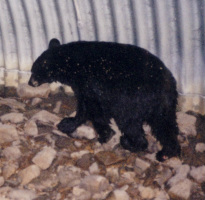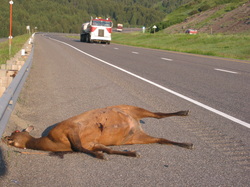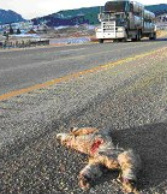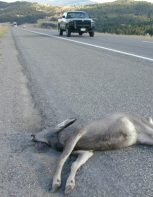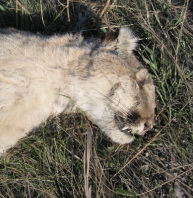|
Home Programs Sustainable Land Use Madison Valley High Divide Climate Research Pika Research High Divide Transportation Bozeman Pass Madison Valley Renewable Energy Wind Power Development Transmission Lines Conservation Planning Book Bridger Canyon LIDAR Why LIDAR? Past Projects Related Information:Bozeman Pass Wildlife Channelization ITS Project - FINAL REPORT
Bozeman Pass Wildlife Linkage and Safety Study Bozeman Pass Paper presented at 2009 International Conference on Ecology and Transportation (ICOET) |
Bozeman Pass:
|
Data
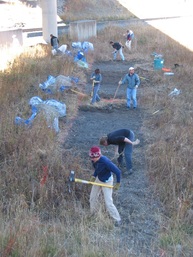
Two years of data were collected from this trackbed before the bridge was rebuilt. Motion-sensor cameras were also placed in culverts to record animal movements at the bridge. The bridge was replaced in 2006 and lengthened to provide more room for wildlife to cross under the highway. Wildlife exclusion fencing 8 feet high was then installed along a 1.4 mile section to direct animals underneath the interstate through the bridge passage or through a pair of large culverts. The fencing was completed in the spring of 2007, and Craighead scientists continued monitoring the road to determine the effectiveness of the fencing at reducing roadkill and increasing animal movement underneath the highway.
|
|
RESULTS
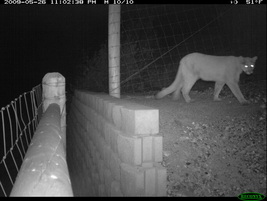
The results have been striking: The wildlife fencing has significantly reduced roadkill in the fenced area, without increasing roadkill outside the fenced area. In four and a quarter years of pre-fence monitoring, for instance, 49 ungulates were killed in the area to be fenced. In three years of post-fence monitoring, only 8 ungulates have been killed there, either inside the fenced section or just outside at the fence ends. Also, after the fencing was installed more animals travelled underneath the highway--the mean number of daily ungulate crossings under the overpass increased significantly, from 4.6 to 7.2 per day.
This Craighead Institute study has demonstrated that using wildlife fencing together with existing underpasses (or as part of already planned construction) is a very cost effective way to improve human safety, reduce roadkill, and provide safe wildlife crossings. What we have learned at this bridge site can be used in other areas of the Bozeman Pass and throughout Montana.
Outreach and Follow-up
The Craighead Institute has also been working with the Bozeman Pass Working Group (BPWG) to address ways to protect and improve wildlife connectivity and human safety in the Bozeman Pass area. This group has helped secure conservation easements and land exchanges to protect wildlife habitat on both sides of the MRL bridge crossing site. Craighead staff has given presentations to local audiences and led field trips for university students, highway professionals, and interested stakeholders.
Related projects by WTI and American Wildlands were funded my MDT to study the effects of warning signs and reduced speed on both motorist's awareness and roadkill rates. Reduced speed does seem to reduce the number of animal-vehicle collisions, but getting drivers (especially commercial trucks) to slow down is a complex issue. It is usually only effective when there is constant and highly visible law enforcement. By far the most effective way to reduce animal hits is to keep the animals off the highway altogether.
This Craighead Institute study has demonstrated that using wildlife fencing together with existing underpasses (or as part of already planned construction) is a very cost effective way to improve human safety, reduce roadkill, and provide safe wildlife crossings. What we have learned at this bridge site can be used in other areas of the Bozeman Pass and throughout Montana.
Outreach and Follow-up
The Craighead Institute has also been working with the Bozeman Pass Working Group (BPWG) to address ways to protect and improve wildlife connectivity and human safety in the Bozeman Pass area. This group has helped secure conservation easements and land exchanges to protect wildlife habitat on both sides of the MRL bridge crossing site. Craighead staff has given presentations to local audiences and led field trips for university students, highway professionals, and interested stakeholders.
Related projects by WTI and American Wildlands were funded my MDT to study the effects of warning signs and reduced speed on both motorist's awareness and roadkill rates. Reduced speed does seem to reduce the number of animal-vehicle collisions, but getting drivers (especially commercial trucks) to slow down is a complex issue. It is usually only effective when there is constant and highly visible law enforcement. By far the most effective way to reduce animal hits is to keep the animals off the highway altogether.
